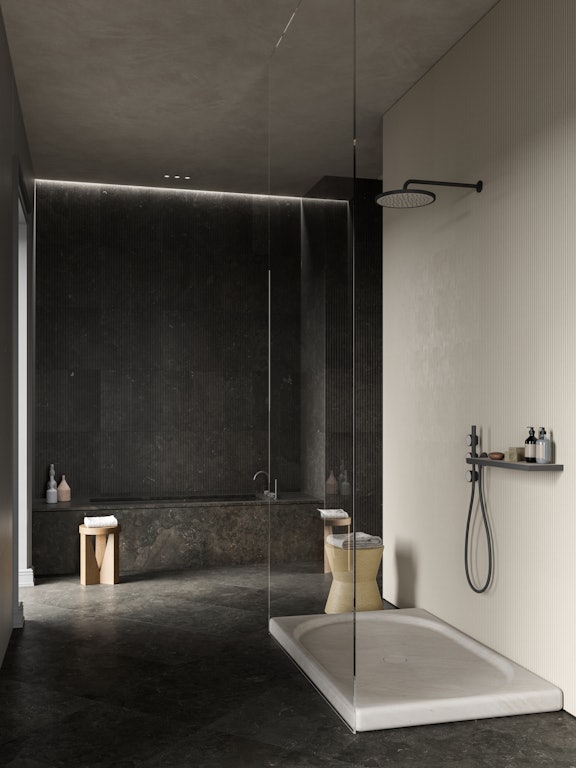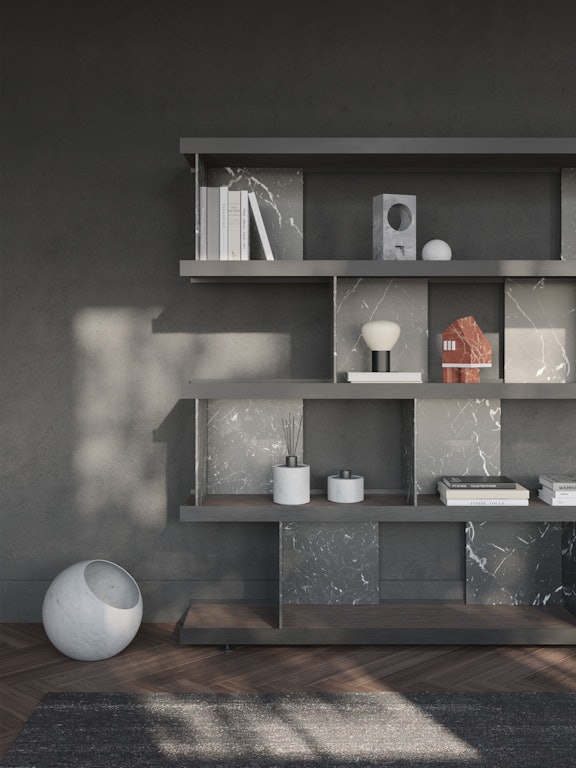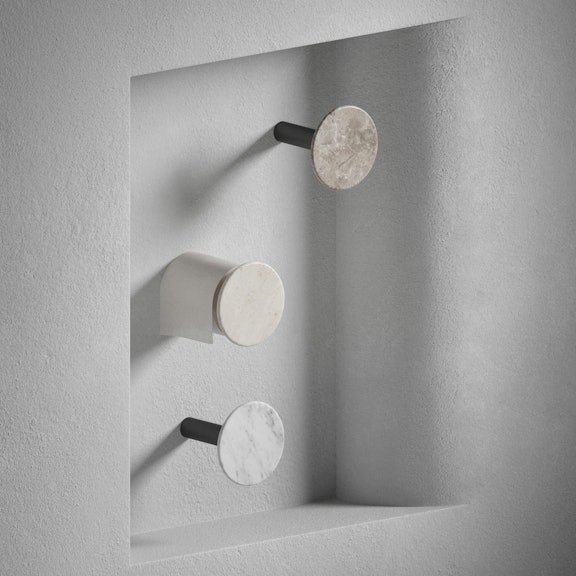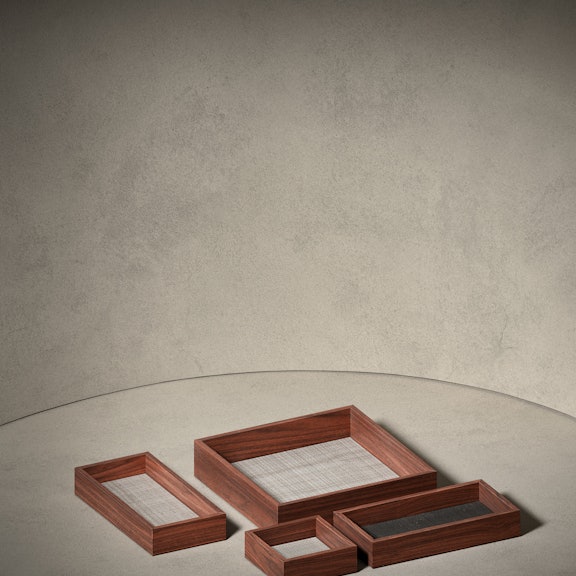How to apply the 7 elements of design to your bathroom
07.2023
Discover the 7 key elements of interior design and how to use them to create functional and luxurious décors in Salvatori style.
The importance of the 7 elements of design in creating a stylish oasis of wellbeing
The bathroom is not merely a functional place, but represents an opportunity to create an oasis of style and wellbeing in the comfort of your own home. Key to achieving this is remembering that every little detail counts, along with following the 7 elements of design: line, form, colour, light, texture, space and pattern.
Each of these plays a fundamental role in determining the overall look and the atmosphere of a space.
We explain how to incorporate these interior design elements to create a bathroom décor that is both functional and elegant.
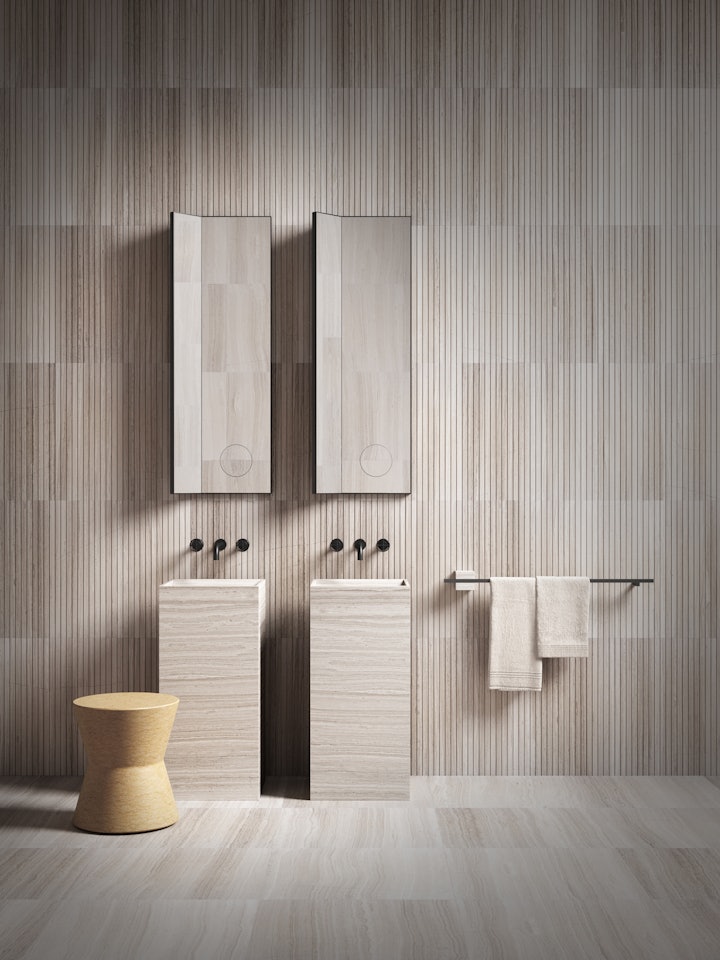
Guide the eye by utilising line in interior design
The first aspect to think about when it comes to interior design is line and here we take the concept beyond its simple meaning, thinking about how lines can bring order and structure to a scenario.
To be more precise, vertical lines lend a sense of height and continuity, such as we can see in textures such as Spaghetti or Infinito, while horizontal lines inject stability and can increase the perception of width so that a room appears more spacious.
The Ishiburo collection by Kengo Kuma is an interesting solution when it comes to playing with the vertical aspect. The sculptural-like lines of the stone that clads both bathtub and washbasin create a relaxing visual rhythm that ensures the eye follows the entire surface.
Another trick is to play with the contrast of the squared lines of the Stiletto lavabo against the soft curves of our Spaghetti tapware for an extra element of visual interest.
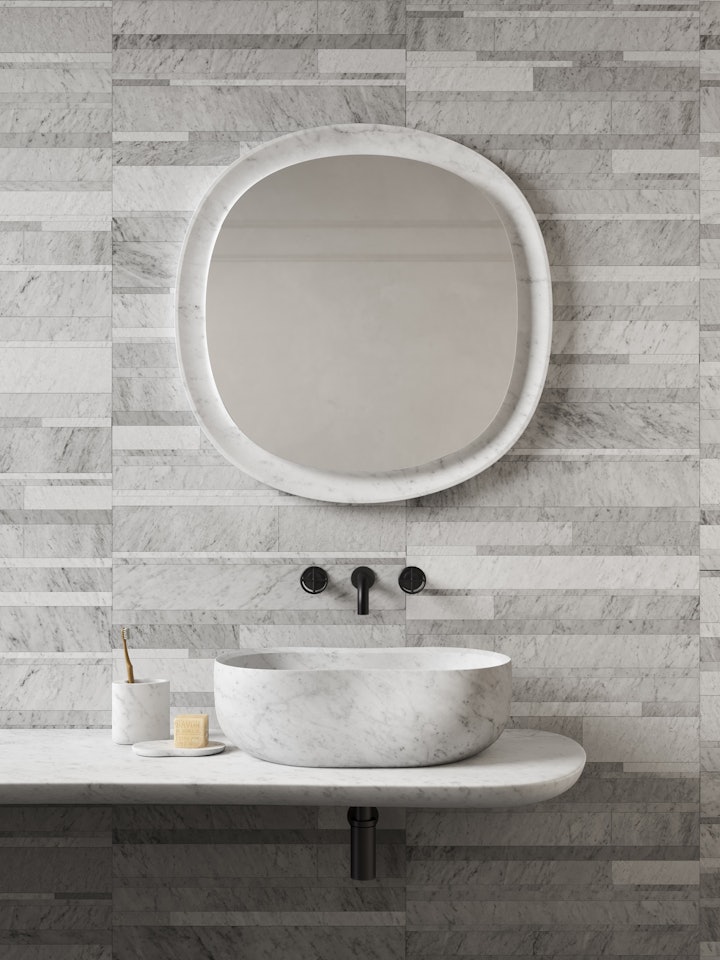
Create structure and flow through the use of form in interior design
Another important element in interior design is the choice of forms or shapes, as these create a coherent visual structure and a harmonious flow, which can make a real difference in a bathroom.
They define the contours and the form of the space by working as silent but highly effective pillars of both the overall aesthetic and functionality.
We can take as an example the Anima collection in which natural stone takes on soft curves that transmit a sense of tranquillity and serenity and create an enveloping, soothing atmosphere far from the frenetic pace of daily life.
In applying “the sensibilities of clay to natural stone” as designers Yabu Pushelberg describe their collection, Anima shows how respecting specific interior design principles can instil a sense of balance in a bathroom setting.
.jpg?fp-x=0.5&fp-y=0.5&auto=format&w=720&h=540&fm=jpeg&q=70&fit=crop)
Create the right atmosphere by understanding the effect of colour in interior design
The third rule when it comes to interior decorating basics is the use of colour to define the overall atmosphere.
Pale tones help make a space appear larger and airier, so a bathroom with walls and floors in classic white Bianco Carrara marble or creamy Crema d’Orcia limestone will transmit a sensation of cleanliness and serenity. This trick is great for small rooms where light colours really make a difference in terms of perception of space.
Darker shades, on the other hand, are more suitable if you are looking to create a moody, cosy atmosphere where you feel you have been transported into a sanctuary or private spa.
Pietra d’Avola and Gris du Marais® are examples of stone and colour that really contribute to this feeling of luxury and, in well-lit spaces, their intense dark tones also create an interesting play of contrast and add a sense of depth.
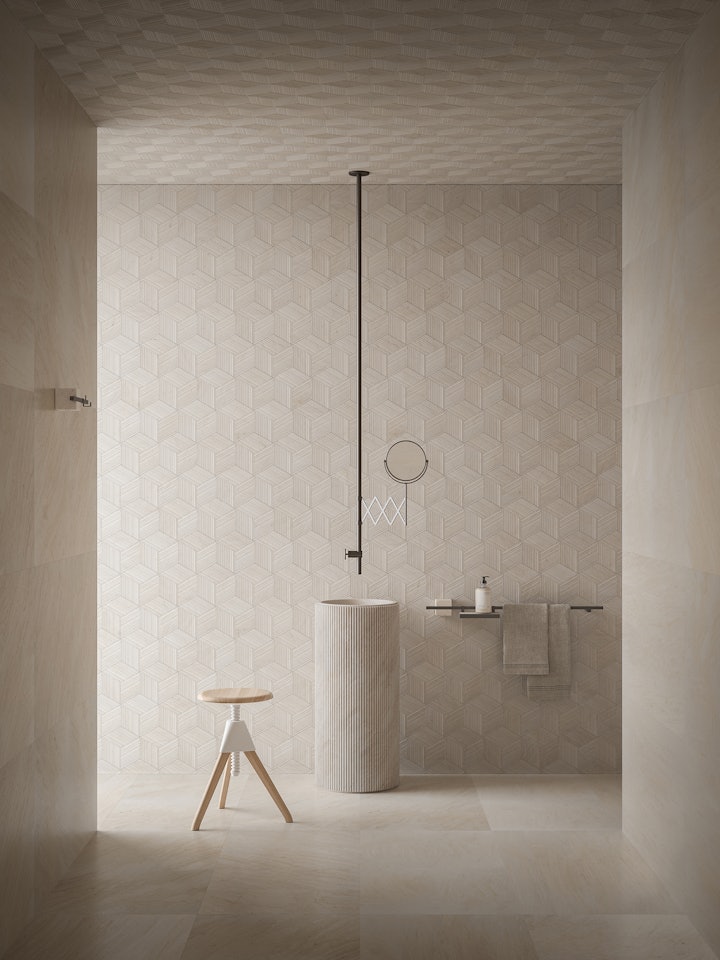
The power of light in interior design
Light plays a surprisingly important role in interior design, going beyond the mere function of providing illumination, but highlighting materials, lending visual depth and creating a fascinating dance of chiaroscuro.
A perfect example of how lighting can make a real difference is the Adda collection which includes freestanding washbasins that combine the coolness of natural stone with the warmth of wood. Of particular interest is the ribbed walnut variant which becomes a real star item of furniture once the light interacts with its corrugated surface to result in a contrast of light and shadow.
What’s more, when the light reflects of the stone, it transmits a dynamism that touches not only the material itself but also the entire décor.
Perhaps the textbook example of the magic of lighting is our Romboo texture. Composed of small diamond-shaped tiles laid to form a series of rhomboids, once lighting is added, they take on a three-dimensional aspect, perfect for a feature wall.
One final point on light is the fitting which can become statement pieces of décor in their own right. Look no further than the Urano lamp by Elisa Ossino, Marco Carini’s fluttering Farfalla or Silo which can be installed as a single cylinder, a cluster of three or more, or even as a showstopping chandelier.
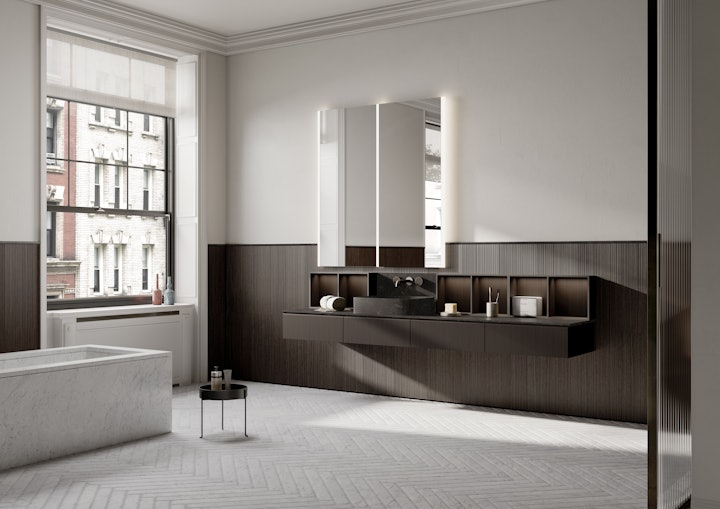
The tactile and visual appeal of texture in interior design
Another of the 7 interior design elements is texture and this is a valuable tool when it comes to going beyond aesthetics into multi-sensorial territory.
Touch is an important aspect that is often neglected in interior design, but by mixing types of materials, you create an experience that involves whoever visits or inhabits a space.
The Hito collection, for example, uses natural stone, glass and wood in an intriguing dialogue of surfaces, with the cool, smooth stone and glass contrasting gently with the wood’s open grain for a wonderfully tactile and engaging effect.
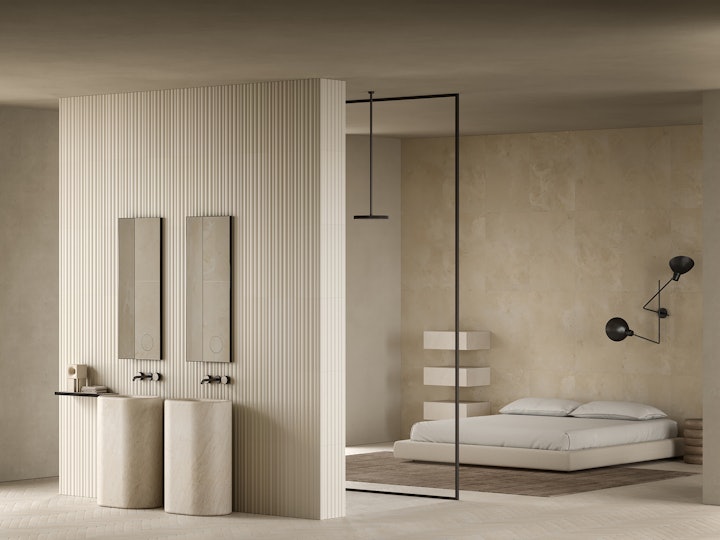
Make the most of your space
When talking about space within the context of interior design, it’s all about the placement of the various items. Whether you are looking to optimise the layout of a small bathroom through ingenious space-saving solutions or strategically placing a bathtub under the window to capture the natural light and create a theatrical setting, the right choice can lead to surprising results.
If you love the idea of an ensuite bathroom but are a little short on square metres, an interesting option could be to go for an open plan bathroom with just a partial wall for the necessary privacy. Alternatively, an artfully positioned glass door can add luminosity to both bathroom and bedroom without sacrificing privacy.
Whichever of these options you choose, the result will be a spacious, light and welcoming bedroom-ensuite combination, and then all you need to do is select a statement piece such as a Balnea freestanding basin or Anima bathtub.
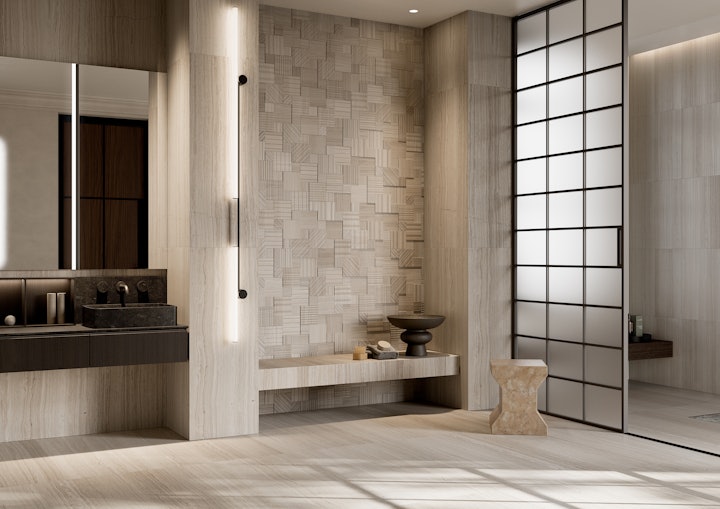
Create visual rhythm through interesting patterns
The last of the 7 key interior design elements is pattern. This can be introduced into a room’s scheme in a number of ways, such as through a feature wall using a geometric design, as illustrated by our Patchwork texture which is composed of different textured tiles in the same stone laid randomly.
With pattern, you can really have fun, and experiment with combinations of similar or different textures depending on whether you want to create a sense of continuity or contrast.
For example, you could go with a classic but always striking chessboard pattern of white Bianco Carrara and darkest-brown Pietra d’Avola or a more understated look with a pale stone such as Crema d’Orcia in Rain, Plissé or other three-dimensional textures.
Interior design is a fascinating form of art that offers a myriad of ways to transform a functional bathroom into a stylish sanctuary. Every single element makes a difference in turning an ordinary room into an inviting, eye-pleasing space that is a joy to spend time in.
If you would like to give your bathroom a makeover, why not get in touch with one of our design professionals for a complimentary consultation. We will be delighted to listen to your ideas, help you choose beautiful Made in Italy products and offer practical advice to create your dream bathroom.
.jpg?ar=3:2&fp-x=0.5&fp-y=0.5&auto=format&w=1439&h=959&fm=jpeg&q=70&fit=crop)
